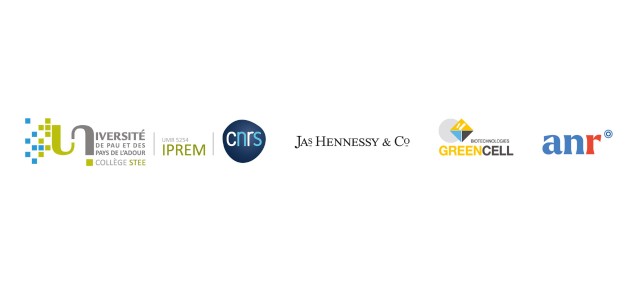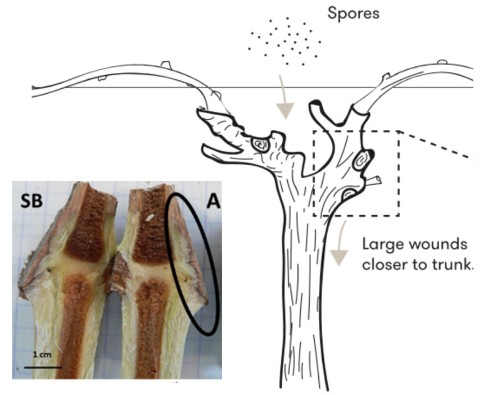The Winesca Project
The WinEsca project, being based on the main findings obtained in a first ANR industrial chair, GTDfree, allow us to propose agroecological plant protection solutions that would be shortly applied at the end of the new chair.
Determining the best pruning methods
Severe pruning methods of grapevines having a strong influence on Esca, the WinEsca chair is focused on determining, and showing, that some cultural methods are safer than other for the plants.
To ensure long-term grapevine health, wood necrosis development within the plants and the ensuing deleterious effect on sap-flow, have to be significantly reduced. This will be achieved by demonstrating the cultural and economic benefits of adopting sound pruning practices in a timely manner on plants of various ages (young and mature grapevines). Experimental demonstration is critical to convince winegrowers to apply appropriate pruning methods.
Eliminating white-rot fungi
Another relevant method could be biocontrol, because the wood of grapevine is colonized by many microorganisms, some of them having potential biocontrol activities.
We will seek to cure Esca-diseased grapevines by specifically targeting white rot, a wood necrosis whose extensive development is associated with sap-flow disorder several weeks before the onset of Esca-leave symptoms and which used to be treated by arsenate.
White rot will be studied on mature Esca-diseased grapevines and treated with biocontrol agents (BCAs) such as bacteria, fungi and/or oomycet. The consequences in terms of protection, plant physiology and side-effects on the native microbiota inhabiting grapevines will also be analyzed.
Economics and acceptance of new solutions
Economics will also be investigated, as shown in GTDfree by the economic relevance of the curettage solution. This method is efficient to cure Esca-diseased grapevines but, due to side effects on plants, its acceptance and adoption by winegrowers are key issues.
The WinEsca strategy, based on the combination of complementary agroecological protection approaches to preserve healthy grapevines and to cure Esca-diseased plants, is designed to offer viticulturists relevant methods for controlling Esca that are fully adapted to environmentally-friendly viticulture.





